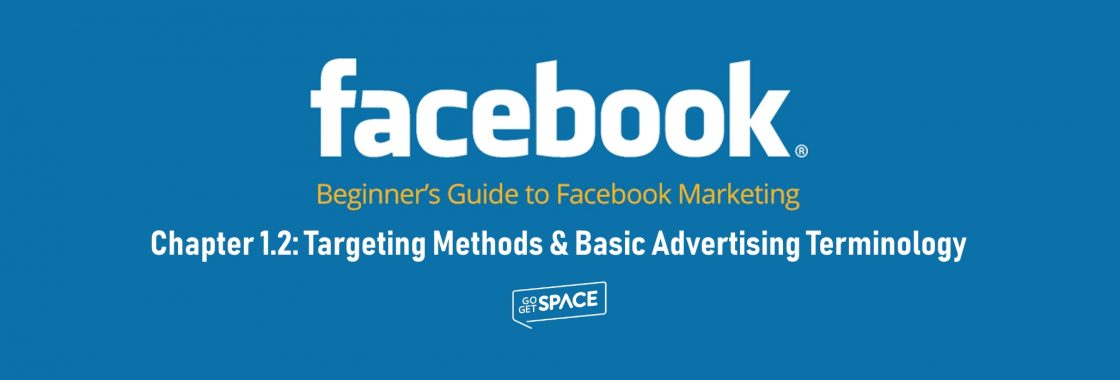Facebook advertising has been recognized as one of the most effective digital marketing channels by many experts, and there are good reasons for it.

What are those reasons that make Facebook advertising so effective?
We discussed that in the first lesson of this course, that you can read from right here, if you haven’t read already.
This is the second lesson on the “Facebook Marketing” course, and I welcome you back.
In the first lesson, we got introduced to Facebook ads and learned their basics. We also went through the different type of ads that Facebook lets you create, and learned when to use which one.
In this lesson, we’re going to learn about the different targeting methods you can apply to filter out the most desired audience of yours from 2 billion-plus Facebook users.
We’ll also get introduced to basic facebook terminology that you’ll need to learn to advance with facebook marketing.
Terms like CPC, CTR, CPM etc. helps you analyze your ad reports, but you probably are not familiar with them still, and I’m looking forward to introducing them to you today.
I’m excited to get started, aren’t you?
Table of Contents
Different Methods to Target Your Audience
Success possibility of an ad campaign depends mostly on how well you target your audience. With incorrect targeting, wrong people will keep seeing your ad while Facebook will keep charging you per view.
Remember I told you that it’s not easy to filter out your target audience from 2.2 billion facebook user? It’s really not.
To do targeting in the most effective way, you need to understand all the possible methods to target your audience and figure out the best possible mix for your circumstances.
1. Location
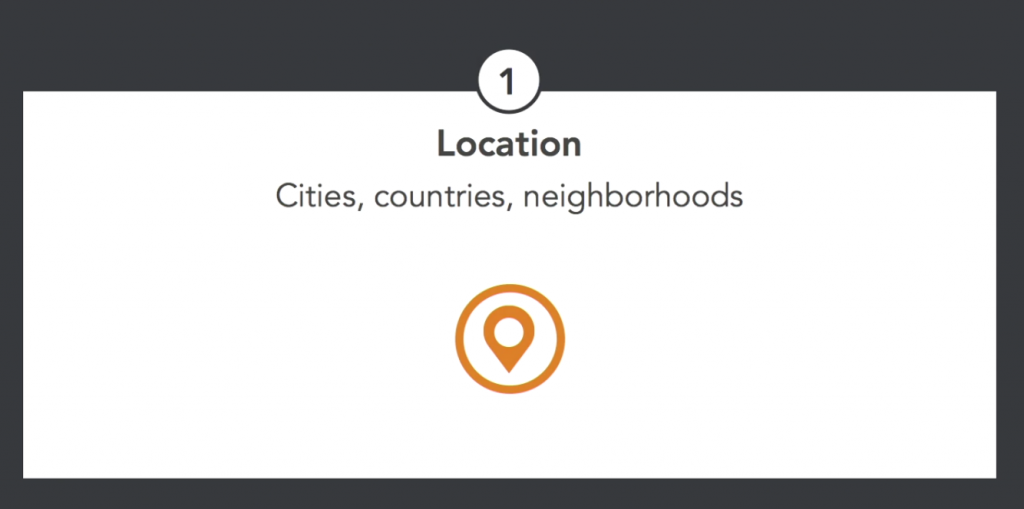
Location is by far one of the most widely used targeting options for Facebook ads. Considering location as a targeting method, you can identify cities, countries or even neighborhoods that you want to do business in.
For example, if you’re a local business, you have the option to show ads to people that live within 10 miles of your store location.
Or, if you’re a product delivery service provider within a city or region, you can choose to target people living in your city or region only.
When you choose to do this, Facebook will scan profiles of people to find out their exact location and then show the ad to only your desired people.
This way, only people nearby will see your ad and you have the chance to get maximum conversion.
2. Demographics

The next widely used targeting option is demographics. This time, you’ll try to filter out your audience based on criteria such as age, gender, or education.
For example, you sell fancy jeans that usually people from 20-35 years olds like to wear.

So you can choose to show your ad only to this group of people that are within 20 to 35, where Facebook will scan people birthdate and figure out their age and then choose whom to show your ad to.
You can choose to do this for different age group, as per your audience’s nature.
Now, let’s take that example a little further. Say you sell fancy jeans for females only of all age.
This time you can only choose to target females. When you choose to do so, Facebook will scan people’s profile for their gender and only show ads to your desired profiles.
(Note: You can take multiple demographic factors into consideration while using demographics to target your audience.
Mashing the two examples above with the location one, you can ask me if you can target female jeans wearer between 20 to 35 living in KL, Malaysia or not. The answer is, you can do so.
For this, you’ll have to take your audience through three funnels.
First, you’ll choose to target people living in Kuala Lumpur, Malaysia only. Then with the gender filter, you’ll only keep females into consideration and cut out other genders. Finally, you’ll choose to show up to the age group of 20-35.
Targeting will demographic will be discussed in details later, since this is just the basic introduction to different targeting methods available)
If you say you want to target people by education, you can do that too since facebook collects people’s educational data while opening the account.
For example, you’re a job consultancy firm in Malaysia that only works with university graduates.

So you can run an ad campaign to show up to that group of people by targeting them with their education level.
Facebook will scan people’s profile for their educational status and only show your ads to graduates living in Malaysia.
You can do this from other perspectives as well like only Ph.D. holders, or only graduates from a particular educational institution, or only graduates of a particular concentration and so.
(Again, details will be discussed later since this is only to introduction to the basics of targeting)
3. Interest

Another effective targeting method of Facebook ads is interest.
Targeting people by interest can bring you an outstanding ROI as here people see an ad of only what they like or interested in. Again, this is what makes Facebook ads so effective.
When you target people by interest, you’ll reach them based on their hobbies, pages of interest they’ve liked on facebook, events they go to, groups they’re in etc.
For example, if you sell bicycles, and want to show up to a specific audience, you can reach people who follow the Tour de France, Giro d’Italia and Vuelta a España facebook pages.
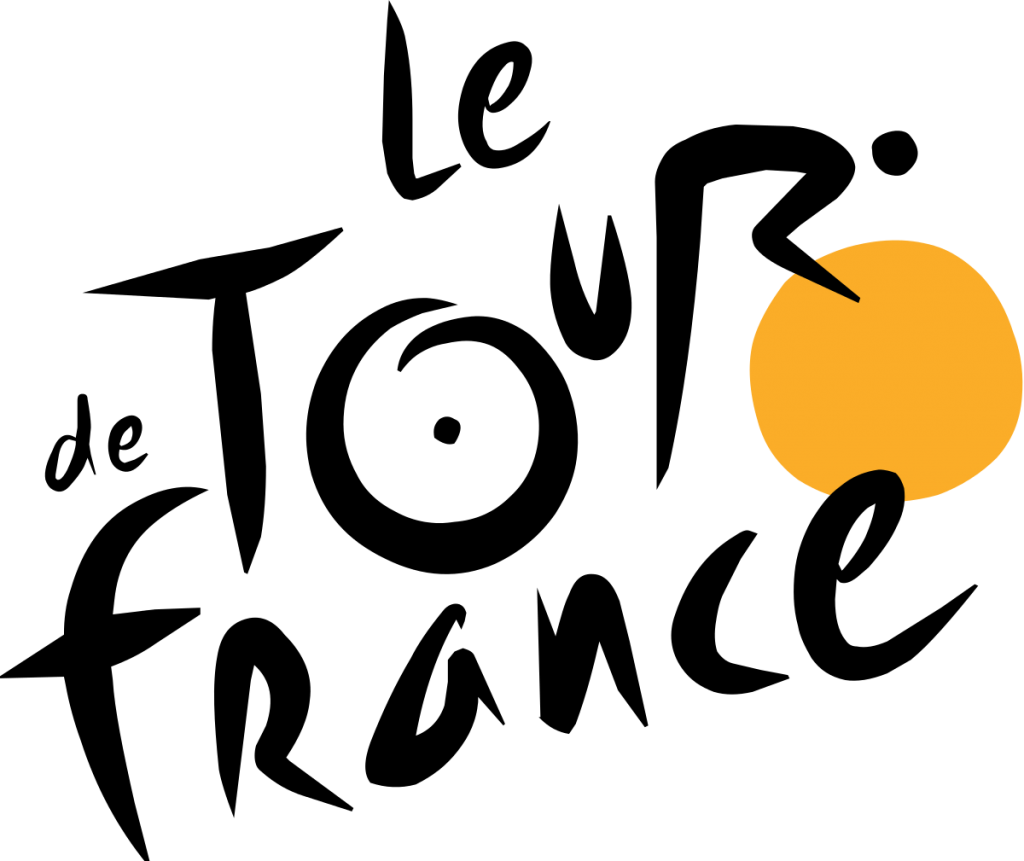
Also, Facebook will automatically target people for you that has listed cycling as their hobby.
Targeting people by interest, being more effective, is more complex as well than targeting simply by location or demographic factor. This time things are not that straightforward.
Facebook scans to collect a lot of information this time, like the type of the pages you’ve liked on Facebook, the type of comments you’ve left and also the website you’ve visited (according to cookies), to make the targeting as accurate as possible.
4. Behavior
You get the scope to target based on behaviors as well, in addition to targeting based on interest.

When you choose to target by behavior, you can target them by their recent life event (like engagement), their purchase habits, or by their device usage as well.
Suppose you are a wedding planner in KL, Malaysia, who you’d want to target?
Simple – the people who’ve got engaged recently. Facebook lets you do that, to target people based on what’s happening in their life.
For example, you’ll see a group of people travels a lot from one country to another. As facebook can track their location (based on their consent), Facebook knows where and when they’re traveling to.
This group of people could be a lucrative target to travel agencies or someone who sells travel supplies like travel bags, neck pillows, travel slippers and shoes and so on.
On top of that, you can also target people by the device they use or their device usage habits.
If you’re an IOS app developer, you can target the group of people who only use iPhone or has an iPhone or iPad.
Or, if you’re an app developer that has an app to help people with proper sleeping, you can target people that use facebook till late at night.
Facebook has the data of people device usage nature and with that, they can help you reach the specific group of people with your desired device usage nature.
Though it should be remembered that behavioral targeting, in most cases, is not as cut and dry as interest targeting. So you need to very aware of that and have a very good idea of exactly whom you want to target when you’re using it to target in campaigns.
5. Connections
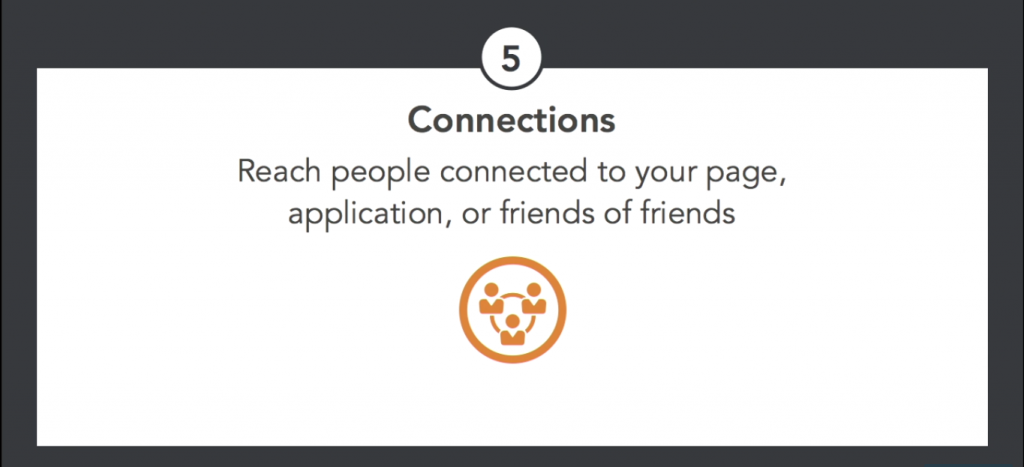
The next method of targeting is connections. Using connections as targeting method, you can reach people who’re connected to your event or page or application, and their friends as well that you can target.
Another powerful targeting method is the custom audience targeting option. This time, you tell Facebook who to show your ad to.
As you become experienced with Facebook marketing and want to advance further, you’d want to take advantage of this powerful targeting method.
When you choose to use custom targeting method, you’ll have to create custom audiences based on your own customer data.
Facebook will not scan profiles this time for you, rather you gotta tell facebook exactly who to target this time, and give them clues to identify your custom audiences profile.
You’ll have to upload your custom audiences emails, phone number or user ID. Facebook will use those data to identify and find out people’s profile that you want to target, and then show your ads only to them.
For example, you’re running an e-commerce website, and you want to retarget people that have purchased from your before, with a similar product.
The next method of targeting is connections. Using connections as targeting method, you can reach people who’re connected to your event or page or application, and their friends as well that you can target.
This method is more feasible when you’re promoting an event, and when you target the friends of those people who’ve already RSVP’d on Facebook.
6. Custom Audience

Another powerful targeting method is the custom audience targeting option. This time, you tell Facebook who to show your ad to.
As you become experienced with Facebook marketing and want to advance further, you’d want to take advantage of this powerful targeting method.
When you choose to use custom targeting method, you’ll have to create custom audiences based on your own customer data.
Facebook will not scan profiles this time for you, rather you gotta tell facebook exactly who to target this time, and give them clues to identify your custom audiences profile.
You’ll have to upload your custom audiences emails, phone number or user ID. Facebook will use those data to identify and find out people’s profile that you want to target, and then show your ads only to them.
For example, you’re running an e-commerce website, and you want to retarget people that have purchased from your before, with a similar product.
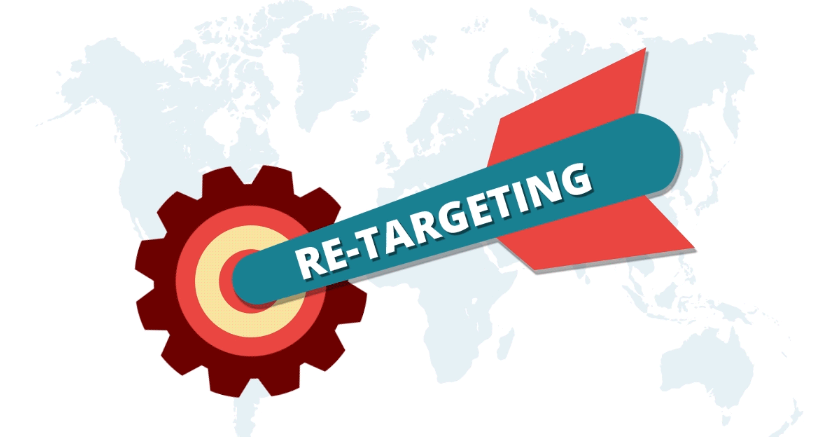
To be more precise, you want to target your female customers that had purchased makeup kits from you, with a newly launched even better makeup kit.
Since they made a purchase from you, you’re like to have their emails as well.
The next thing is simple. You construct a list with those email and upload to facebook. Facebook will use those emails to identify those customer’s account, and show ad only to them.
As you can guess already, custom targeting could bring you an outstanding conversion rate as you’re targeting very specific people this time, and none of your money getting wasted no wrong people will see your ad.
So it seems like, whatever your advertising goals are, and what your circumstances are, Facebook probably has a targeting option that is the best match for your needs.
Sometimes, you might need to get creative and try multiple targeting options to reach out to your audience. Don’t be afraid to experiment and figure out the best possible method for you.
Also, don’t forget to tell me which targeting option or mix you’re going to choose.
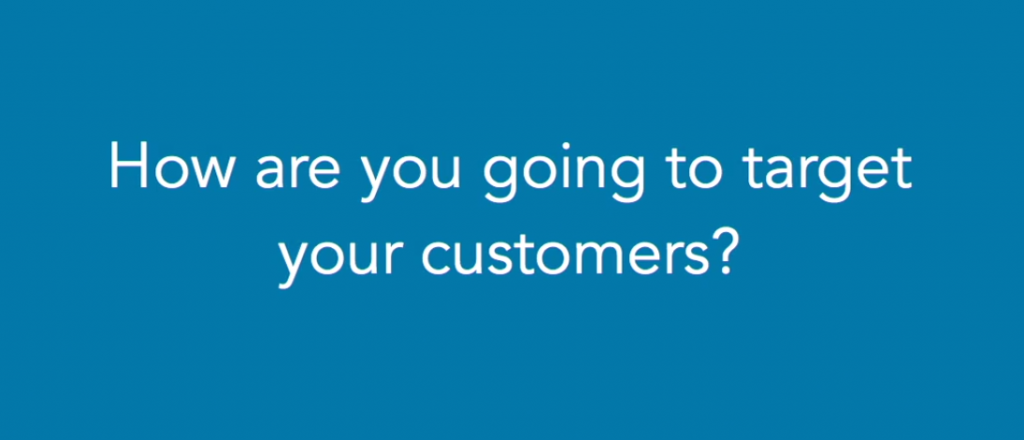
We might have a good discussion to figure out whether it’s a good choice or not.
Let’s Get Introduced to Basic Advertising Terms
How many times you’ve come across terms like CPC, CTR and so and didn’t understand a thing? Happened with me many times in the beginning.
Like, I’d try to act like a pro and start analyzing the report of an ad campaign and see a various number like CPC, CTR, CPM etc.
Basically, I didn’t know what those meant and what worse is, I didn’t know whether bigger or smaller of those numbers were desirable.
Since you don’t want to end up being in my situation, you want to get introduced to those terms from the very beginning, as these terms are related to all sorts of digital marketing (AdWords), not only facebook.
Here are the most popular digital marketing terms you’ll come across with –
1. Clicks
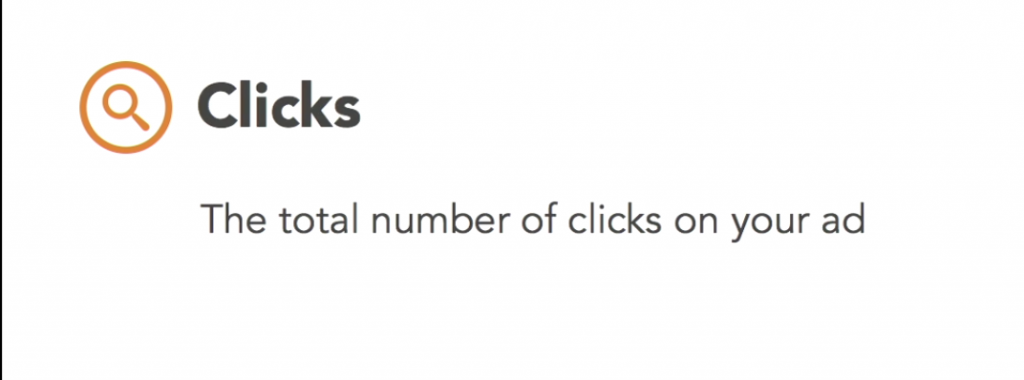
The total number of “Click Actions” on your ad.
Depending on what you’re promoting, this term can vary. Click actions could mean page likes – the total number of like “like” button was “clicked” on your ad; event responses – the number of time someone took action to your event; app installs – the number of times someone clicked the install button on your ad.
Impression refers to the total number of time your ad was displayed in screens.
There’s a little confusion here. Impression is often regarded as the number of times your ad was seen. That is not the actual definition.
The actual definition is as I told above – the number of time your ad was “Displayed”.
People often don’t pay attention to your ad and just keep scrolling, so we’ll not take that as actively viewing your ad.
CTR, or click-thru rate is calculated by dividing the number of clicks you receive with the number of times your ad was shown to facebook (impressions).
The higher the CTR is, the more conversion your ad is getting, which indicates to better performance of your ad.
2. Impression

Impression refers to the total number of time your ad was displayed in screens.
There’s a little confusion here. Impression is often regarded as the number of times your ad was seen. That is not the actual definition.
The actual definition is as I told above – the number of time your ad was “Displayed”.
People often don’t pay attention to your ad and just keep scrolling, so we’ll not take that as actively viewing your ad.
But it’s still an impression count.
So impression is about the number of time the ad was displayed in mobile or pc screen, not the number of times it was actually seen.
Now you may ask, how do I know how many times the ad was seen?
The answer is, you can’t. There’s no way for Facebook to collect data on it.
However, most often the impression count gives a close overview of how many times your ad was actually seen by people.
3. Click-Thru Rate (CTR)

CTR, or click-thru rate is calculated by dividing the number of clicks you receive with the number of times your ad was shown to facebook (impressions).
The higher the CTR is, the more conversion your ad is getting, which indicates to better performance of your ad.
4. CPM

The next term we have is CPM, which refers to cost per 1000 impressions.
CPM is the average cost that facebook charged you to provide 1000 impressions on your ad. And as you already know, impression is the number of times your ad appeared on someone’s screen/page.
5. Cost-Per-Click, CPC

CPC refers to the average Cost per Click. Simply explained, the amount spent divided by the number of clicks you’re received.
Means, how much money you had to spend to get each click.
You can pay to Facebook on a CPM or CPC basis. When you’re paying on a CPC basis, you’ll see this number calculated, which is obvious.
But when you’re paying on a CPM basis, you’ll still find this number, because this is another measure of showing how your ad is performing.
When you take CPC as performance measurement factor, you’d want to aim at lowest possible CPC that still returns the results you desire.
Means, you want to spend as less possible to get a click that possibly will convert and get your desired return.
6. Frequency

The next metric we have is frequency. You’re obviously familiar with this term in regular life. And for Facebook ads, it means the same as well – the number of time your ad appears on someone’s newsfeed.
Sometimes one single impression is not enough. You need to show up to people multiple time to get your attention and that’s what this feature is focused on.
You can set your desired limit on this. This is more of an advanced option of Facebook advertising.
When you choose to show your ad multiple times to one person, you gotta be careful and cap this number at a certain rate to ensure no ad fatigue. People do not like to see one ad over and over and over again and it can backfire as well.
For example, I’m recently being bothered by a guy too much to purchase his online course. No matter wherever I go, be that facebook or youtube, I’m constantly being bombarded by his ad.

I actually kind of liked this guy before this incident, but he being too much bothering, I had all my impressions gone and I ended up reporting him for being too much bothering.
You don’t want to end up similar, so it’s important to choose your frequency wisely.
7. Reach

The last term we’re going to learn today is reach. Reach is referred to the number of unique people that saw your ad.
Reach might look similar to the impression, but it’s not. Frequency has a role to play here. Reach is calculated by dividing impression by frequency. If the frequency is one, reach is similar to impression.
Let’s make your life easier with an example.
Say, the number of impressions you have is 100, means your ad appeared on display for 100 times.
And, the frequency is one, which means every people saw your ad only once.
That means, every time your ad made an appearance on display, it was a unique audience’s display, since no one can see your ad twice (means same ad displaying twice on their device).
Mathematically, Impression (100) / Frequency (1) = Reach (100), means equal as impression, when frequency was 1.
Similarly, in this same case, if the frequency was 10, reach would be 10 as well. How?
Impression (100) / Frequency (10) = Reach (10).
How do we interpret this?
The number of unique people that saw your ad is 10, and each of them saw the ad 10 times, making the total impression count (the number of appearances, no matter to whom) 100 (10*10).
Hopefully, this example made the term “reach” clear to you and you won’t confuse it with impression.
All the terms you learned here will help you understand the numbers in your advertising campaign report and judge the performance of the campaign. With the judgment, you can decide whether to continue the ad, refine it or maybe kill it.
And these were some of the most common terms that are frequently used, and the most significant ones as well. There are some other terms that you’d still want to learn.
Follow this link – https://www.facebook.com/business/help/447834205249495/ for the full list of terms needed for facebook advertising.
A Little Quiz Test For You…
Before we end this lesson, I’m going to ask you a few questions to review your learning. Try to answer this question without scrolling up, to see what you have actually learned.
Answer this question by commenting below or emailing me and I’ll tell you whether you’re correct or not, and I’d like to correct you as well with pleasure if you go wrong on this (nevermind, I’m not going to score you, so just answer)
Question 1: You’re running an ad with the intention of getting more people in touch with your brand. For that, you want to include a ‘Contact us’ Button.
So, How can you include a ‘contact us’ button in your ad?
- Through the conversions option
- Through the brand awareness option
- Through the call-to-action button option
- Through the page post engagement option
Question 2: Suppose you have a kitchen utensil manufacturing business in Malaysia. You want to sell products like kitchen faucets, knives etc.
You want to target people that follow TV cooking shows on TV3, TV9, and other national cable channels. Now, since they follow those channels, they might have their facebook page “Liked” and they follow those.
What targeting method should you use to target those people then who’re followers of particular pages on an interest?
- Demographics
- Location
- Interest
- Connections
*Clue: Refer to the term “Liked” and Followers of a page.
Question 3: Suppose you have an e-commerce based store that sells books. Now, online bookselling platforms are not that common in Malaysia. So, to make it popular, you want to appear more in front of your audience and grow awareness in their mind about your business.
What type of ad should you create then?
- Store Visits
- Conversion
- Engagement
- Brand Awareness
Question 4: If you have resources available, what method of targeting could prove to be the most converting?
- Targeting by Location
- Targeting by Demographic
- Custom targeting based on your own customer data
- Targeting by interest
Question 5: You Want CTR to be –
- High
- Low
Question 6: You Want CPM to be –
- High
- Low
Question 7: You Want CPC to be –
- High
- Low
Wrap Up for Now
Hope you had a good test. But if not, don’t worry, I ain’t going to tell your mom. So don’t be afraid to leave the answers in the comment, or mail me, no matter even if it is nowhere near to be correct.
I’ll see you in the next lesson. Till then, keep exploring these stuff yourself.
Cuz, No learning is better than practical learning.

